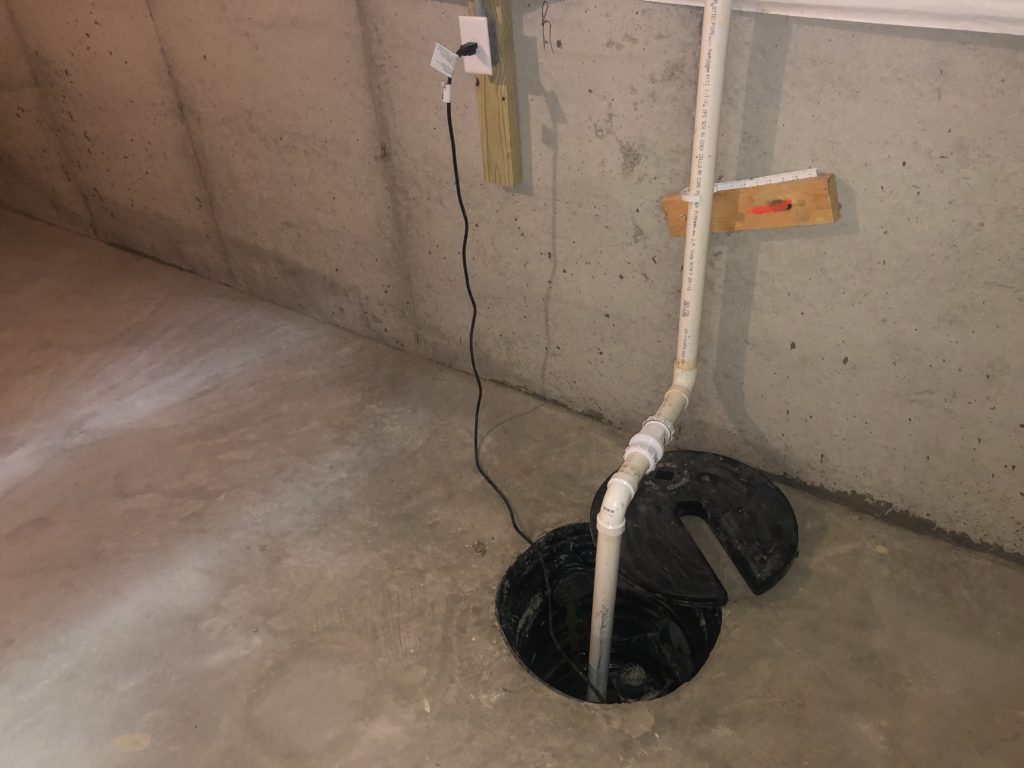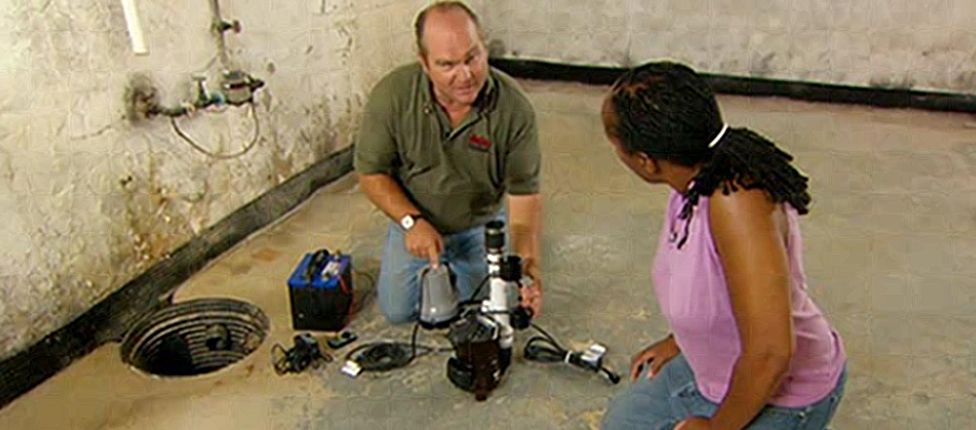Tested Methods for Maintaining a Sump Pump
Tested Methods for Maintaining a Sump Pump
Blog Article
Presented here further down you might get some outstanding points related to How To Effectively Clean A Sump Pump.

Sump pumps are crucial elements in lots of homes, especially in areas susceptible to flooding or excessive wetness. They assist prevent water damages by efficiently getting rid of excess water from basements or crawl spaces. Nonetheless, like any other home appliance, sump pumps need regular maintenance to ensure they function efficiently when required one of the most. Cleansing your sump pump is a vital part of its upkeep, and recognizing how to do it effectively can save you from pricey repair work and possible catastrophes.
Intro
Keeping a clean sump pump is crucial for its correct functioning and longevity. Disregarding this necessary task can cause clogs, malfunctions, and inevitably, water damages to your residential or commercial property. As a result, discovering exactly how to clean up a sump pump is important for property owners who rely upon these gadgets to maintain their basements completely dry and safeguarded.
Signs of a Dirty Sump Pump
Recognizing when your sump pump requires cleaning is important for avoiding possible breakdowns. Some typical indicators that show an unclean sump pump consist of weird noises throughout operation, reduced water circulation, and visible debris in the pit. If you notice any one of these symptoms, it's essential to clean your sump pump quickly to avoid any type of more issues.
Planning for Cleaning
Before you begin cleansing your sump pump, it's essential to take some safety preventative measures. Beginning by turning off the power to the pump to prevent any electrical crashes. Additionally, wear proper protective equipment, such as gloves and safety glasses, to secure on your own from dust, particles, and possible virus.
Comprehending the Sump Pump
Before diving into the cleaning procedure, it's vital to have a fundamental understanding of exactly how a sump pump works. Commonly mounted in a pit or container listed below the cellar floor, a sump pump consists of several essential parts, consisting of a pump, a float button, and a discharge pipeline. When water accumulates in the pit, the float button triggers the pump, which then pumps the water out with the discharge pipe, away from the structure's foundation.
Step-by-step Overview to Cleansing a Sump Pump
Shutting Off the Power
Begin by separating the power supply to the sump pump to avoid any type of mishaps while cleansing.
Looking For Appropriate Functioning
Prior to reinstalling the pump, perform a fast test to ensure that the float switch activates the pump appropriately. Pour some water into the sump pit and observe the pump's procedure. If every little thing is functioning correctly, you can rebuild the pump and reconnect the power supply.
Removing Particles and Dirt
Utilize a container or an inside story to eliminate any kind of visible particles, dust, or debris from the sump pit. Dispose of the particles correctly to prevent it from clogging the pump or the discharge pipeline.
Cleansing the Pump and Drift Change
As soon as the pit is free from debris, thoroughly get rid of the pump from the pit. Inspect the pump and the float switch for any kind of indications of damage or wear. Make use of a soft brush or towel to cleanse the surfaces and eliminate any type of gathered crud.
Purging the System
After cleaning the pump and float switch, flush the sump pit with clean water to remove any staying dirt or sediment. This will help ensure that the pump operates efficiently and efficiently.
Maintenance Tips to Maintain Your Sump Pump Clean
In addition to periodic cleansing, there are a number of upkeep ideas you can comply with to keep your sump pump in optimum problem:
Final thought
Cleaning your sump pump is a vital element of its upkeep and guarantees that it operates efficiently when you need it one of the most. By following the steps outlined in this guide and including regular upkeep right into your regimen, you can extend the lifespan of your sump pump and secure your home from water damage.
6 STEPS ON HOW TO CLEAN A SUMP PUMP PROPERLY
UNDERSTANDING SUMP PUMPS
Your sump pump plays a crucial role in protecting your home by managing and removing excess water. It primarily functions as a “shield”, guarding your basement against the damaging effects of water accumulation. The pump is housed in a sump pit in the lowest part of your basement, and its job is to pump out any water that collects there.
During heavy rainfalls or when snow melts rapidly, water can infiltrate your basement, posing potential risks like flooding, structural damage, and harmful mold growth. Here, the sump pump springs into action, pumping out the intruding water and directing it away from your home.
SAFETY FIRST
Before cleaning, remember to prioritize safety. Disconnect the sump pump from the power source to prevent any accidental electric shocks. Also, wear sturdy gloves to protect your hands from any sharp or dirty components within the pump.
REMOVE THE SUMP PUMP
After ensuring your safety, the next step is to remove the sump pump from its pit. Doing this might require careful maneuvering as you don’t want to damage any pump components. Once removed, clean the sump pit to remove any accumulated debris or sludge.
INSPECT THE PUMP
Inspect the pump for any visible signs of wear or damage. Check the power cord, float switch, and impeller housing. If any components look worn out or damaged, consider replacing them to ensure optimal performance.
CLEAN THE PUMP
Thoroughly clean the pump with warm, soapy water. Make sure to rid it of any dirt, gravel, or other debris that might impede its performance. You can use a toothbrush to clean the small, hard-to-reach parts of the pump.
REINSTALL THE SUMP PUMP
Reinstall the pump into the sump pit Make sure it’s positioned correctly to remove the water effectively Once it’s back in place, reconnect it to the power source TEST THE PUMP
Finally, pour some water into the pit to ensure the pump works correctly. It should start automatically and begin pumping out the water; if it doesn’t, check the power source and the positioning of the pump.
Remember, while cleaning your sump pump is an essential part of home maintenance, hiring a professional plumber for a thorough inspection and cleaning at least once a year is also important. This will ensure that your pump is in optimal condition, ready to protect your home from potential water damage.
BEST PRACTICES FOR CLEANING SUMP PUMP DISCHARGE PIPES
Regular Inspection: Regularly inspect your discharge pipes, especially during heavy rainfall or snowmelt periods. Look for any signs of blockage or damage. Early detection of problems can prevent serious issues down the line. Periodic Cleaning: Over time, sediment and debris can accumulate in the discharge pipes, impeding the flow of water. Regular cleaning helps keep the pipes clear and functioning efficiently. You can use a high-pressure water jet to effectively clean the pipes. Insulation During Winter: In colder climates, discharge pipes can freeze, blocking the outflow of water. Protect your discharge pipes from freezing temperatures by insulating them with foam pipe insulation. This will ensure the sump pump can continue to discharge water even in freezing conditions. Proper Positioning: The discharge pipe should be positioned to direct water away from your home’s foundation. Improper positioning can lead to water seeping back into the basement. Ensure the pipe is long enough and angled correctly. Installation of a Check Valve: A check valve prevents water from flowing back into your sump pit after the pump has pushed it out. Installing a check valve helps maintain the efficiency of your sump pump and reduces the risk of flooding. Minimize Pipe Turns: Every curve or turn in the discharge pipe can decrease the efficiency of water flow. By minimizing turns and bends in your discharge pipe, you can increase the efficiency of your sump pump. https://www.fullspeedplumbing.com/how-to-clean-a-sump-pump-properly9999/

We had been introduced to that report on Cleaning & Maintenance Tips for Your Home's Sump Pump from a pal on another web blog. Sharing is good. Helping others is fun. I cherish reading our article about Cleaning & Maintenance Tips for Your Home's Sump Pump.
Apply Now Report this page